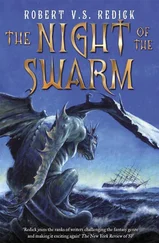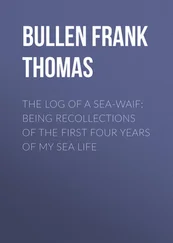She took a step backwards and she started to run again.
Without a car she'd be lost, there was no doubt about it. The only higher ground was on the other side of town, towards the mainland. She breathed evenly and deeply, trying to push down the panic that was welling inside her. Adrenaline shot into her muscles -she had the strength to run forever, but that wouldn't help her. The wave was much faster.
The path forked in front of her. To the left it led to the restaurant, and to the right was a shortcut up the bank towards the car park where she'd left Johanson's jeep. If she ran there now, she'd make it to the car park; then straight up the road, towards the hill, as fast as the jeep would take her. But she couldn't leave Kare. The old men in the distillery had said he was heading back to the restaurant and that meant he was there, waiting for her. He didn't deserve to be left alone. She didn't deserve to be alone any longer.
She ran past the turn to the right and towards the building. It wasn't far now to the Fiskehuset. The thundering noise was louder, but she tried to ignore it and shake off her fear. And she was fast. She'd be faster than the wave. Her speed would be enough for two.
The door to the terrace flew open. Someone rushed out and froze.
Kare.
She called his name, but her voice was lost in the howling of the wind and the thundering of the wave.
He started to run, and disappeared round the side of the building. Lund groaned, unable to believe what was happening. Then the splutter of an engine was carried to her on the gale. An instant later Kare's car sped off up the road towards the hill.
Her heart almost stopped. He couldn't do that to her. He must have seen her. He must have.
He hadn't.
She carried on running, through the bushes and over the boulders to the car park. Her only hope was the jeep. She reached a barrier, a two-metre-high wire-netting fence. She pulled herself over it. Once again she'd lost valuable seconds in which the wave had surged forward. But now she glimpsed the jeep, a dark silhouette through the curtain of rain. It was tantalisingly close.
She ran even faster than before. The rocks gave way to meadow, and then her feet were on concrete. There was the jeep.
Come on, Tina, ran.
The concrete shook.
Run.
Her hand slid into her pocket, fingers curling round the key. Her boots beat a regular rhythm on the ground. She skidded over the last few metres, but it didn't matter, she was there. Open up! Hurry!
The key slid out of her hand.
Oh no ! she thought, please no, not now .
Frantically she fumbled for the key, spinning round in a circle.
The sky filled with darkness.
Slowly she looked up and saw the wave.
The hurry was over. She knew it was too late. She'd lived fast, and she'd die fast too. At least, she hoped it would be fast. At times she'd asked herself what it would be like to die, what went through a person's mind when their fate had been sealed and they knew it was time. I've come for you, Death would say. You've got five more seconds, so have a last think, whatever von like. Look back on your life, if you wish.
Didn't they say that as your car flipped over, or you fell from great height, that somehow, your life flashed before you, images from your childhood, your first love, like a 'best-of compilation?
But the only thing Lund felt was fear that death would hurt her, and she'd suffer. She felt almost ashamed that it had had to end so pitifully. That she'd messed up.
She watched as the tsunami crashed into Kare Sverdrup's restaurant, smashing it to pieces and surging onwards.
The wall of water reached the car park.
A few seconds later it was rushing up the hill.
The shelf
By the time the wave had reached the surrounding coastline, it had wrought untold damage on the shelf.
The oil-rigs and platforms built near the break had disappeared along with the slope. That alone had cost the lives of thousands but it was merely a foretaste of what was to come. As the water surged forward, it formed a towering vertical front that grew taller as the water depth decreased. Under the force of the impact the struts of the platforms snapped like matchsticks. In less than fifteen minutes more than eighty had toppled into the sea. The problem wasn't so much the height of the wave – North Sea oil platforms were built to contend with forty-metre waves, which, statistically speaking, occurred once in a hundred years – but the combination of other factors.
Even ordinary waves had been known to exert pressure of up to twelve tonnes per square metre – enough to rip out sections of harbour wall and deposit them in the centre of town, to throw sailing-boats into the air, and break a freighter in two. That was the impact of a wind-generated wave. The force of a tsunami was a different matter. Next to a tsunami of similar amplitude, even the most ferocious surface wave seemed gentle as a lamb.
The tsunami triggered by the landslide reached the middle of the shelf at a height of twenty metres, low enough to pass beneath the platforms' decks.
The force with which it hit the pilings was all the more lethal.
Oil-platforms, like ships and any other construction destined for long-term exposure to the sea, were expected to withstand certain stresses, which were measured in years. If the defining criterion was the forty-metre wave, then engineers designed the platform to survive the impact of the swell. Since the wave was expected only once a century, the platform – according to the workings of a none-too-confidence-inspiring logic – was deemed to have satisfied the hundred-year standard. That meant, statistically, that it was fit to weather a century of waves. Of course, no one expected it to last a hundred years being battered by forty-metre waves. In fact, it might not even survive one major surge. Monster waves weren't really the problem: the damage was done by everyday wear and tear caused by ordinary waves and currents. Platforms and other technical structures soon developed an Achilles' heel, although its location was anyone's guess. If a weak spot on a platform suffered the equivalent of fifty years' stress within the first decade, an ordinary wave might suddenly pose a risk.
Figures couldn't solve the dilemma. The statistics and mean values used in marine engineering described ideal scenarios, not what really happened. Averages might mean something to bureaucrats and engineers, but the sea had no truck with statistics: it was a succession of unpredictable circumstances and extremes. A particular stretch of water might have an average wave height often metres, but if you were hit by a one-off thirty-metre monster that statistically didn't exist, the average would be of precious little comfort: you would die.
When the tsunami swept across the landscape of steel towers, it exceeded their maximum strain. Struts snapped, welded joints burst open and decks sagged. On the British side, where steel structures were the norm, practically every platform was smashed to pieces or fatally damaged by the impact.
Years earlier Norway had switched to reinforced concrete pilings, which provided less of a target for the tsunami, but the outcome was no less calamitous: the wave bombarded the derricks with ships.
Theoretically, most ships weren't equipped to deal with surface waves of more than twenty metres. The hull-girder stress was designed to cope with a maximum nominal wave height of sixteen and a half metres. In practice, things worked differently. In the mid-nineties rogue waves north of Scotland tore a hole the size of a house in the 300,000 tonne tanker Mimosa , but the ship got away. In 2001 a thirty-five-metre breaker nearly sank the cruise ship MS Bremen off the coast of South Africa – nearly. That same year, close to the Falklands, the Endeavour , ninety metres in length, fell victim to a phenomenon known to oceanographers as the 'Three Sisters' – three freak waves, each thirty metres high, in quick succession. 'The Endeavour was severely damaged, but she made it back to port.
Читать дальше












